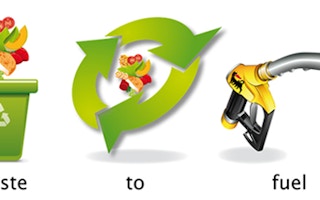According to a recent UNEP report, the world’s waste levels are increasing due to rising populations and economic development. In Asia and the Pacific region, consumerism has picked up sharply resulting in a rapid increase in plastic waste generation levels, more so than the world average.
To continue reading, subscribe to Eco‑Business.
There's something for everyone. We offer a range of subscription plans.
- Access our stories and receive our Insights Weekly newsletter with the free EB Member plan.
- Unlock unlimited access to our content and archive with EB Circle.
- Publish your content with EB Premium.
This is due to the very rapid urbanization and economic development in the region. Over the past 20 years plastic production has increased at a rate of nearly 5 per cent per year and is now becoming a major waste stream, posing a serious threat to the environment.
In many cases, this waste is being dumped or littered throughout cities, blocking drains and posing a threat to wildlife or is burned, releasing toxic pollutants and threatening public health.
This presents an opportunity rather than a challenge - if waste streams can be viewed and used as a valuable resource.
Taking this view of waste is a complete paradigm shift that is beginning to happen with the advent of new technologies that are capable of taking residual and commercial waste and turning it into fuel.
“
If alternative, secure, economically viable and predictable sources of gas could be produced economically from residual domestic and commercial/industrial waste, it could provide support and security to the many key sectors that are dependent upon gas.
This is a particularly compelling proposition for South East Asia, which relies on LNG for its gas supplies following the failure of the Trans-ASEAN Gas Pipeline. This leaves the region exposed to fluctuating international gas prices and supplies, threatening its energy security.
Demand for fossil fuel is increasing and there are many uncertainties concerning supply; there are many upward pressures on pricing with existing reserves increasingly at risk.This presents a supply and cost challenge for industries over the long term, including the power generation, domestic heat, manufacturing, petrochemical and hydrogen production sectors, which are dependent on fossil fuels.
If alternative, secure, economically viable and predictable sources of gas could be produced economically from residual domestic and commercial/industrial waste, it could provide support and security to the many key sectors that are dependent upon gas.
The Advanced Plasma Powers Gasplasma® process, for example, produces a very clean synthesis gas, which is suitable for further processing, making it the ideal solution for downstream applications in power, fuel and chemical production. The composition of the syngas is highly consistent with hydrogen and carbon monoxide forming the largest constituents. The small amounts of sulphur, chlorine and ammonia compounds can be easily removed and the water gas shift reaction used to increase hydrogen content.
The cost of converting waste into hydrogen is highly competitive with the cost of converting natural gas into hydrogen. In many cases the overall cost of using the Gasplasma process to generate hydrogen will be significantly more predictable than the cost of using natural gas and steam reformation.
Rather than and relying on fossil fuels to meet our mounting energy needs and treating waste as a problem to be disposed of, advanced technologies can convert municipal, commercial and industrial waste into clean, sustainable energy and fuels.
Aligning waste policy with energy security concerns will allow the expansion of a sustainable and cost-effective alternative to current, harmful practices.











